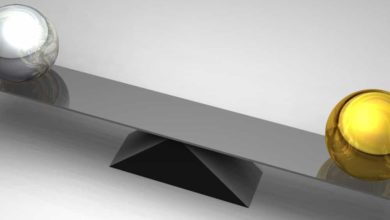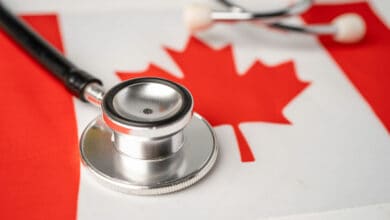ProspectiveDoctor is in the process of developing it’s newest tool- the Student Review. With Student Review, applying students can easily navigate medical student evaluations of a particular medical school. If you are a medical student, please represent your school and contribute to our database by following the links below!
Until the release of the Student Review tool, we will be uploading small samples of the responses that we receive from medical students across the nation. It is our hope that these responses can help demystify the culture of medical school and provide a valuable tool for those interested in comparing and exploring different schools. Our first sample of the student review comes from a first year medical student who attends the Mayo Clinic College of Medicine. If you are a medical student, please contribute to the Student Review tool and have your thoughts shared with thousands of prospective doctors- keep in mind that we verify your attendance at the claimed institution.
Form for Allopathic Medical Schools
Form for Osteopathic Medical Schools
First Year Medical Student
What was your best MCAT score:
Did not Report
What was your overall GPA: 4.0
What was your science GPA: 4.0
What MD school do you attend: Mayo Clinic College of Medicine
Around what date did you interview at this school: 10/15/2013
Around what date did you get accepted into this school: 10/31/2013
What other medical schools were you considering: Johns Hopkins University of Medicine, University of Chicago Pritzker School of Medicine, University of California-Irvine.
Where did you complete your undergraduate education:
Did not report
Briefly describe the following aspects of your school
Curriculum:
I love the curriculum here. It’s all block format so we go through the basic sciences (biochem, anatomy, micro, pharm, etc.) during the first year and do organ blocks the second year. You essentially never have class more than 4 hours a day (which is amazing).
I’d say 98% of the instructors are top-notch. They’ve really tried to eliminate the PhD style lecture where they throw way more information at you than you’ll ever need. A lot of the profs write questions for the boards so your exams are great prep for the USMLE step 1 (which is hands down the most important test you’ll take during medical school.)
The students here are super supportive of each other. There’s an online compendium of students’ notes/study tips/study materials that goes back for about 10 years. The environment is one of peer support and competition is really minimal. That’s not to say that classes aren’t intellectually stimulating or challenging (believe me, they are). But there’s no unnecessary stress added on. The lack of stress is underscored by the fact that there is no AOA, no internal ranking, and all grading is Pass/Fail for the first two years.
The best part of the entire Mayo experience has to be the selective program. In between each block of classes, you have between one and four weeks of time to explore aspects of medicine that you find interesting. This may mean spending a week shadowing the chief of neurosurgery, taking time to work on/present your research, get out of town to see family/loved ones, or almost anything else that you can imagine. These allow you really personalize your medical school experience and see what kinds of medicine you’re most interested in. Also, for people who have spouses/kids/etc. across the county, it gives them a great chance to reconnect. These periods are great times to get involved clinically – some of your classmates will be delivering babies, others will be assisting in surgeries, and you may be simultaneously discovering the cure for cancer.
Town/Area:
Rochester is a relatively small town, but people are way too quick to write it off. Minnesota is a beautiful place. There are endless opportunities for cycling, hiking, running, and almost any other outdoor activity you can think of. All of these things offer great breaks between classes. The city is very dedicated to making art and music accessible. During the summer months, concerts are performed almost constantly and huge street fairs seem to be a weekly event. You really get a sense of community living here – “Minnesota nice” is a very real thing and it’s wonderful. Everyone always asks about the cold. Let me be honest….. it gets really cold. There are a handful of days where you just don’t want to go outside (even though I walked to school outdoors every day this year!) For those who like warmer temps, there is a walking subway/skyway system that connects almost every clinic building and even has access to many of the local apartment complexes. There are some students here who show up to class in shorts and sandals in the middle of January.
Facilities:
The facilities are 10/10. The clinic is nicer than any 5 star hotel. The anatomy lab and histology department are brand new (you can’t even smell the formaldehyde!) The gym looks like it’s out of a fitness magazine. Seriously, many of the facilities here are as good as facilities get. Teaching facilities are slightly older but are still nice. Multiple component so the student study and lounge space are undergoing current reviews for renovation.
Admissions:
The admissions process helped sell me on this school. The staff are very friendly and quick to work with you to make a very stressful process less stressful. Don’t be afraid to be persistent. Letters of interest/intent are well-received as long as they add to an applicant’s previous submissions. The following is the a general progression of the admissions process here:
-Review of your primary application
-Request for your letters of recommendation (for select students)
-Interview offer (for select students)
-Admissions committee applicant ranking based on application and interviews
Grading System:
Grading system is all pass/fail. There is no AOA or internal ranking. DO NOT underestimate the significance of these things (especially for people who are thinking about going into competitive fields)
Housing:
There is no established Mayo housing but there are a ton of housing options within walking distance to the clinic. If you want to spread your wings, there are also many opportunities to live on expansive pieces of land and drive in to the clinic. Housing can be very inexpensive (~$350/month) or very expensive ($1800/month) depending on what amenities are important to you, but the average housing cost is probably in the neighborhood of ~$600/month (I’m ballparking here and accounting for the spread mentioned above.) Having a car is very helpful for groceries and things, but not essential. All of the clinical rotations are done at Mayo sites, which you can walk to or catch a quick shuttle ride for. The public transportation system here is quite good and takes you pretty much wherever you need to go.
Food:
The food scene is ever-expanding in Rochester. If you want a good steak and a cold beer, no problem. If you want a white cloth-covered table, a fine wine, and a delicious entrée, you can make it happen. Vegans and vegetarians will love the farmer’s market options. Please don’t be deceived, though, you will not have the breadth of ethnic foods that you will find in LA or NYC.
Student Body:
The class is like a family. There are only 50 of us and there isn’t a single person in the class who I haven’t had a good conversation with. The small size may seem intimidating, but it shouldn’t be. You really get to know each other and it offers some great opportunities for collaboration. Also, keep in mind that you have an enormous clinic to share with only 49 other people – there is never the feeling that you need to compete for space or time in the clinic. Organized events within and among classes are common. This includes sporting events and outings to shows (either in town or out of town in the twin cities/Chicago). Free time is relatively abundant (much more than I thought it would be in medical school.) This is very helpful for people who are in long-term relationships or newly married.
Residency:
The match lists are available online. About 40% of students stay at Mayo for residency. The other 60% match into great places. Primary care fields have long been well-represented by Mayo graduates, but there are plenty of students who also match into competitive surgical and non-surgical specialties
Exercise:
Working out is a favorite hobby of Mayo students. And why not with facilities like the ones here?



